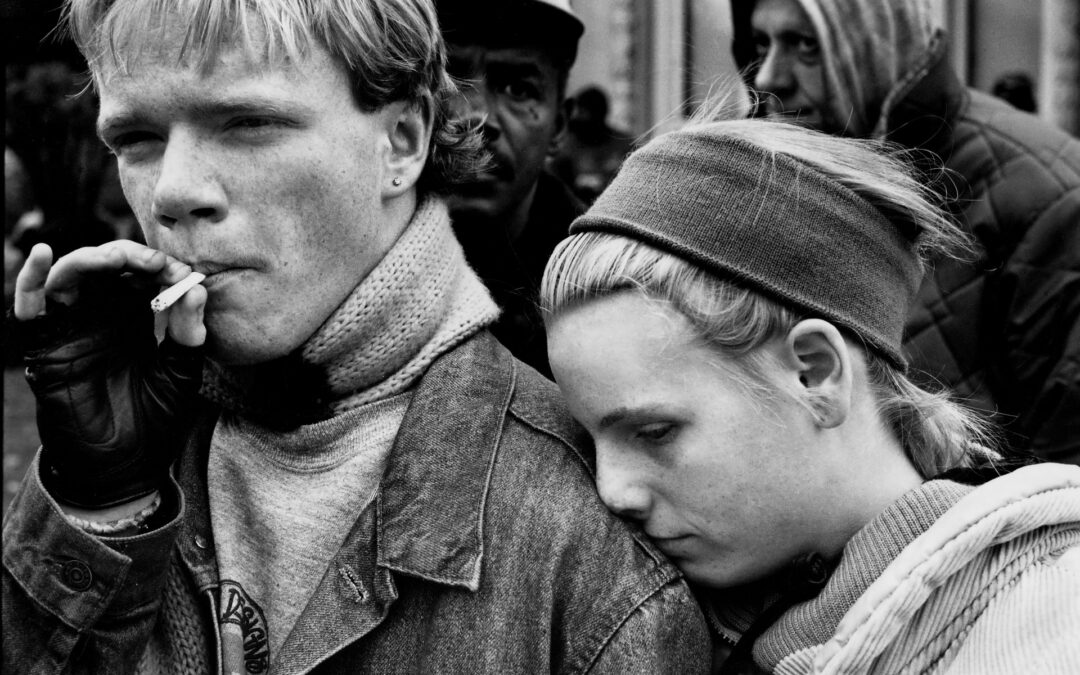
by Jeffrey Cohn | Feb 23, 2020 | Physicians
In her New York Times article of February 6, 2020, Dr. Mikkael A. Serekes recalls a patient of his who was a young adult and was diagnosed with a “terrible lymphoma,” a potentially life-threatening diagnosis requiring aggressive treatment. Despite his concerns that the patient would not make it reliably through the rigors and toxicities of treatment due to immaturity and competing priorities, the young man, with the support of his roommates and “buddies” was a “model patient,” teaching the physician an important lesson.
This story brought me back to my oncology fellowship where I cared for a young woman with a similar diagnosis but, unfortunately, a very different outcome. A persistent cough and chest pressure weren’t enough to make her see a doctor. It was only when she lost her appetite and began having fevers that she presented to the Emergency Department at Grady in Atlanta. Back in the 80’s when I trained Grady was the hospital for the poor and uninsured in Metro Atlanta. Brenda was an 18-year-old runaway, living in poverty. She was admitted to the hospital, diagnosed with Hodgkin’s lymphoma, and transferred to the oncology service where her treatment was initiated.
I first met Brenda over two years later in the as a new fellow in the oncology clinic and her thick chart revealed a sad story. Almost as soon as chemotherapy was started her symptoms went away. The side effects of the treatment, particularly the nausea and hair loss were devastating for her. After three rounds of treatment, delivered in a delayed fashion when she missed appointments or showed up as clinic was closing, she disappeared altogether for nearly a year until her symptoms recurred. Two months of treatment again resolved her fevers and cough and, again, made her life miserable due to nausea. She was “lost to follow-up” for another year, when a return of symptoms brought her back to clinic. My attending physician told me her story before I entered her exam room for the first time, warning me not to get my hopes up too much. As a cancer physician many of the patients that you see have incurable diagnoses. When you meet a person just diagnosed with a potentially curable disease there is a brief internal moment of elation as you think, “Here’s someone I can really help.” Even though this was now her second relapse I was excited and optimistic that there was still a chance her cancer could be cured.
Brenda was seated in the corner, alone. Her stringy blond hair reached her shoulders and a musty odor surrounded her. Her clothes hung off of her thin body, suggesting she’d lost a lot of weight since she first got them. She mostly responded to my questions in one-word answers or short phrases. It was clear that she would pretty much rather be anywhere but where she was. My optimistic, cheerleading approach (“I know this must have been hard for you, but we have a real chance to beat this thing!”) was not reaching her. Yes, she wanted to feel better. But that meant she didn’t want to trade being sick from our treatment for sickness due to the cancer. Cure was not a priority for her, feeling well enough to eat, not have pain, survive- those were her goals.
What could I do to get her through a full round of treatment, one that might permanently control her disease? The nurses and social workers all knew Brenda and had tried to support her. She was very guarded about her life, sharing little about where she was living and how she was getting by from month to month. She rarely was accompanied by anyone for her clinic visits; rarely a disheveled young man would be with her, usually a different one than who’d last been with her. Together, my attending, the nurse and social worker who knew her best, and I described what the next treatment (a different one) would be like, realistically but hopefully. With downcast eyes she reluctantly agreed to “give it a try.”
I would be happy to report that the “third time was a charm.” Instead, things played out pretty much as they had in the past. Two months of treatment were delivered over three and a half months as toxicities and missed appointments impacted the rhythm of what was supposed to be a clockwork protocol. Then a couple of months went by with no sign of Brenda. She showed up at the end of clinic one day, looking sick and discouraged, but defiant. It finally became clear to us that, if at this point, we were going to help her at all, we would need to play by her rules. We discarded any hopes of aiming for cure and tried to find the least toxic treatment we could give that might provide her some temporary relief. With this approach we helped her for a few months until it was clear that we were out of effective treatment options for her. If I recall correctly, she died in the hospital on our oncology unit, alone.
Now 35 years later we would do things very differently for Brenda. First of all, we have many better supportive care options that hopefully would have prevented the devastating nausea she experienced from treatment. Palliative care is a specialty that didn’t exist back then. We would have involved them in her care, both in the hospital and, importantly, in the ambulatory environment, hoping that team-based approach would help her thrive as best possible during the temporary struggles through cancer treatment. Probably there were behavioral health challenges Brenda was coping with that we didn’t identify or do anything about that we wouldn’t miss now. Still- being young, poor, and alone with a serious illness is tough, and I’m not sure that, absent the support of friends/family who care about/for you how much differently the story would play out today.

by Jeffrey Cohn | Feb 21, 2020 | Physicians
Adaptive Positive Deviance Leadership (iv)
Part four of this article series covered the importance of including diverse perspectives in APD initiatives and the need to have the group doing the work feel a sense of ownership in the initiative. In the final article in this week’s series about APD leadership I discuss two important things that APD leaders with positional authority may need to do to help the group do their work: removing barriers to progress and making the time and space available for people to do this important work.
Removing Barriers

Sometimes the group will hit a roadblock that they can’t negotiate by themselves and they need the help of the titled leader to help remove/overcome this barrier. It might be they want to work with an individual or department that they don’t have a relationship with.
Maybe they sense that their intervention is going to rock the boat or ruffle some feathers. Whatever it is, APD Leadership requires you to have their back and work with the organization’s hierarchy to enable their request to take place. And while you’re interfacing with the formal leadership of the organization on their behalf, you’re also sharing the experiences of what’s been going on, creating buzz and inviting others to come and see and, if they choose, to join in the initiative as well.
Create Time and Space for APD Work

Finally, it’s important for APD Leaders to support the APD process by creating the time and space in which to do this work. This is not an add-on, to be done on off hours, weekends, or squeezed into lunch hour. This is real work for a serious problem that is causing serious pain and harm. This means pulling at least some people from their normal jobs to work on this and making sure their jobs get done while they’re working on this.
And everyone in the group needs to participate, at least with regards to hearing about what’s been happening, what’s being learned and what behaviors seem to be positively deviant that the group would like them to start doing (or at least try). Meetings shouldn’t be long- probably 30-45 minutes is right, and the size of the core group working on this should be 4-8 people ideally. This group should meet every 1-2 weeks.
Expect the work to take some time to find your ultimate solution(s)- at least 3 months, realistically probably 6-12 months. Be patient, trust the APD process, and be amazed at what’s discovered and learned, the way the group interacts with each other, and the outcomes that are generated. In my next article in this series I’ll be writing about Smart Networks and how they’re critical for successful APD initiatives.

by Jeffrey Cohn | Feb 20, 2020 | Physicians
Adaptive Positive Deviance Leadership (iii)
Part three of this article series discussed having an inquiry/discovery mindset and being able to hold the mirror up to oneself and the group as characteristics of APD leadership. I continue that discussion today starting with the importance of enabling all voices to be heard.
Diverse Perspectives

A group with diverse perspectives is likely to be wiser and make better decisions, especially when one is searching for the successful behavior that is hiding in plain sight. Nobody knows from whom the practice or idea that makes a significant impact is going to come. We sometimes refer to “unusual suspects”- people who might not typically be sought out for their expertise and who actually have knowledge of what actually works from their own real-world experience. Assemble a panel of titled experts and you’ll miss out on this wisdom.
In the Robert Wood Johnson Foundations supported APD initiative I participated in focusing on reducing hospital-based MRSA infections, a patient transporter named Jasper Palmer identified trash cans overflowing with disposable gowns as a possible reason for healthcare workers not putting on gowns and gloves when they went into a patient identified as being colonized or infected with MRSA. He came up with a novel solution for this problem as shown in this video. APD needs to have voices like Jasper’s heard.
Ownership

One of my mentors, Henri Lipmanowicz, helped me appreciate the difference between buy-in and ownership, and that it was the latter that was critical in creating conditions for APD. He defined ownership as occurring “when you own or share the ownership of an idea, a decision, or an action plan; it means that you have participated in its development, that you chose on your own accord to endorse it. It means that you understand it and believe in it. It means that you are both willing and ready to implement it.” On the other hand, buy-in means “someone else or some group of people has done the development, the thinking, the cooking and now they have to convince you to come along and implement their ideas/plans.”
With APD Leadership you want to support an environment where people are using the words “we” and “our” all the time. This is their challenge, their pain, and it will be their work that leads to their solution. So even if you think you have a better idea than what they’re suggesting needs to be done, as long as you see no risk for serious harm (and I mean serious, like true physical harm or major costs), let your reservations go and trust the APD process. First of all, you’re probably wrong – there’s a reason they’re suggesting whatever they’re suggesting, and the field testing will show what outcomes result from their ideas. Second, by supporting their ideas, you’re creating a sense of ownership in the group.
Since it’s their idea, they own the outcomes, whether they’re great or awful. Your job is to help them make sense out of what happened, holding up the mirror to reflect upon what is taking place (see above). Third, by demonstrating this aspect of APD Leadership, you’re “walking the talk”- you are showing that you trust the APD process and that whatever the solution(s) turn out to be, they’ll come from the group itself.
If you want to read Henri’s wonderful piece about buy-in and ownership you can find it here. I recommend it wholeheartedly! The final article in this week’s series tomorrow will begin with some thoughts on an important APD leadership function: removing barriers. See you then!

by Jeffrey Cohn | Feb 19, 2020 | Physicians
Adaptive Positive Deviance Leadership (ii)
In part two of this article series I discussed the overarching characteristics of APD leadership and how that differs from prevailing leadership models in organizations. Today, tomorrow, and Friday I’ll focus on how APD leaders need to be and what APD leaders need to do to support this kind of change initiative.
Inquiry/Discovery Mindset

APD Leadership requires curiosity. You believe the solution may be out there already, and you have no idea what it is. Your responsibility is to support the discovery process by asking good, non-leading questions of the people in the work about what’s happening, what they actually do (since APD is about behaviors) while repeatedly demonstrating your belief that they are the experts, not you. “Honestly, I have no idea” is a useful phrase. Repeat it often- people won’t get tired of hearing it and will eventually believe it, despite your positional authority.
Hold Up the Mirror

At the same time that APD Leadership is supporting experimentation, it requires people to honestly reflect on the results of that experimentation. We may have thought this was going to be different and better- was it in actuality? What does the data actually say? Given what is actually happening, what would we like to try to do differently? How will we try this out? We’ll pick up with the topic of diversity tomorrow.

by Jeffrey Cohn | Feb 18, 2020 | Physicians
Adaptive Positive Deviance Leadership (i)
In the first article of this series I introduced the concept of Adaptive Positive Deviance (APD) and described the Positive Deviance component, in which one presumes that the solution for a complex challenge is already present in the community experiencing the challenge. The work then becomes a discovery process to identify the practices that are different and better than the norm, along with efforts to invite those experiencing the challenge to try the practices out for themselves. Those that the group agree work better for them than their usual behaviors become the new norm, enabling all to get the better outcomes.
In an institutional setting the existing behaviors are often deeply intertwined into the organizational culture. In fact, in many ways these practices are the culture, as in “We are what we do/tolerate.” These practices often are developed by those in positional authority and become codified in policies and procedures. Creating and supporting the type of environment in which these existing practices can be scrutinized and, as appropriate, replaced by those positively deviant behaviors that have been developed by someone(s) in the community requires a unique approach to leadership. This APD Leadership framework is the focus of this week’s articles.
APD Leadership

The existing leadership model in many organizations (including in most healthcare organizations) is derived from Industrial Age principles. Work is felt to be stable and repeatable, and organizational outcomes are therefore predictable. The role of leadership in this prevailing model is to create a vision and structure organizational roles, policies, and practices around that vision. As stated by Berson and Avolio,
“A core responsibility for organizational leaders is to direct followers towards achieving organizational purposes by articulating the organization’s mission, vision, strategy, and goals. Leaders at all levels are responsible for the dissemination of strategic organizational goals, as well as for convincing their constituents to effectively implement these goals (italics theirs).”
Our current leadership environment is very different from that which existed just a few decades ago. As a result of our interconnectedness and interdependencies, whether it be from relationships, the Internet, or other networks, rapid and often unpredictable changes are the norm. We are constantly influencing others through our actions and interactions, and these actions/interactions create opportunities for learning, creativity, and adaptation. The role of APD leadership is to create conditions that enable such learning and creativity to flourish, what Michael Arena has referred to as “Adaptive Space.”
Novelty and innovation typically take place on the frontlines of our organizations. In typical bureaucracies this sort of contextual creativity is frowned upon and referred to pejoratively as “workarounds,” with efforts directed by those in power to suppress this sort of behavior. APD leadership supports this local experimentation and adaptation in a number of ways. I’ll be posting an article daily for the rest of the week describing aspects of APD leadership- stay tuned.








